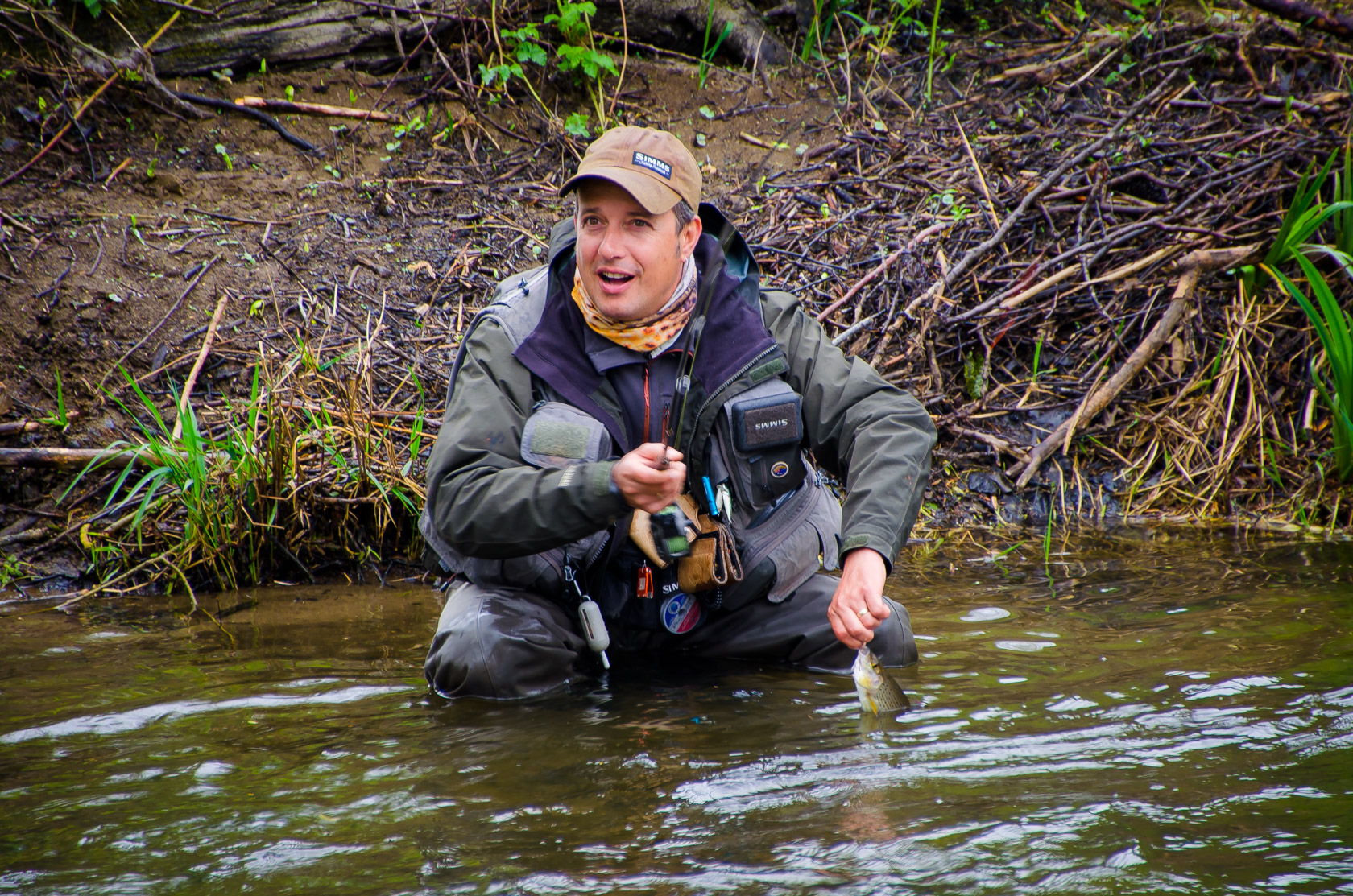At first we were a little surprised, but then very excited, when we received a message from Fishbone who invited Rodtrip for a two-days assessment with no less than Yannick Rivière, a French professional flyfishing guide.
First of all, it must be said that Yannick wasn’t there for learning us to fish a particular river with the most productive method, instead we were there to develop our technique and experience, first by teaching us the linear cast.

The course was spread over two days, rich with detailed explanations, casting demonstrations, leader build up, flies choosing, etc.
Video ( by fishbone ):
Day one
The place to meet was held in Eprave, a most beautiful village in our Belgian Ardens, at 8 o’clock. It all started under a modest rain, which intensified during the morning.
On the schedule of the first day we had the linear cast, and how to fish dry flies, just what the group needed to get started.

Let’s talk about the group. We are eight flyfishermen of all levels getting together that morning. We even have two competitors for the Belgian national team, they have decided that one can always learn something.
And even when fishing amongst the best, it’s nice to see that there are people who are motivated to keep on learning. Some in our group know each others, others don’t, but it doesn’t take long to get talking to each other, so the session starts in a pleasant atmosphere.
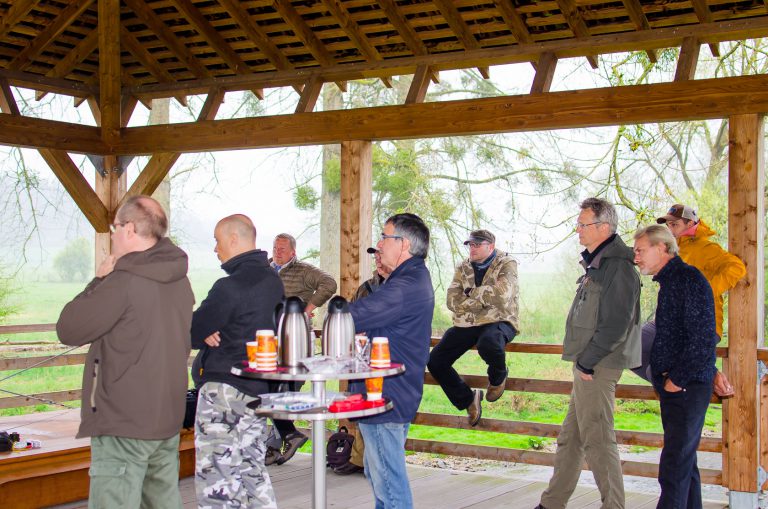
Yannick’s first words are : ‘I’ll be talking nonstop to you guys, and you’ll want me to shut up, because it’s very hard to stop me doing so, and do know I’ve been talking to a bigger group and tougher guys than you are.’
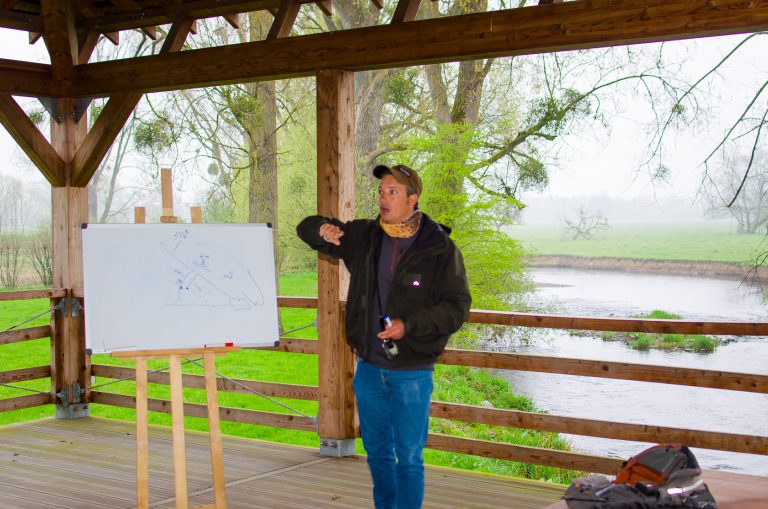
The tone is set, it’s clear that we won’t get bored during this session. And he does this with the typical French flair in a juicy southern accent, which is so nice to listen to, that we almost forget that it’s raining big time out there.
He woke us up with the formula of cinetic energy at 8h15 in the morning… Serious stuff to start with, but digging into details is set to be the standard of this weekend.
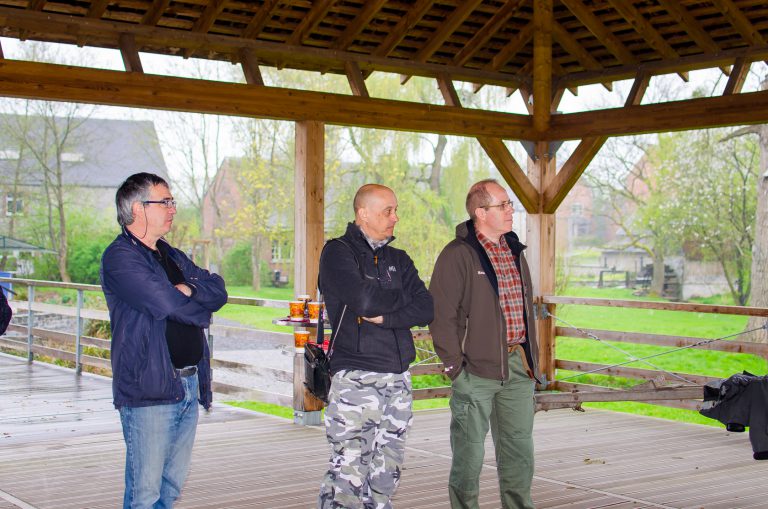
In fact, for Yannick it is vital that all fishing techniques, and casting particularly, must be based on energy, balance and flexibility of our fly line and leader. Thinking of it, we all know that it is very hard to catch a fish on a fly attached on a straight leader and badly presented.
The leader that he showed us was a progressive one, able to fish both dry flies or nymphs by only changing the tippet. It is constructed for the perfect transmission of energy of the cast,enabling you to put a fly in a tight spot, for a couple of seconds, the time needed for a fish to rise and eat your fly.

The linear cast makes this possible as where a traditional cast doesn’t. On the linear cast the fly will hit the water first before the tippet, which falls with slack, followed by the leader. Whilst the leader and tippet lay on the water, the fly is already fishing.
Only then the current will start pulling on your leader, which gives you more time before your the fly starts dragging, and more time for the fish to eat your fly.
Hereunder you’ll find the formula of leader setup which we learned from Yannick :
65cm de 45%- 55cm de 40%- 40cm de 35%- 35cm de 30%- 25cm de 25% puis on y ajoute 2 morceaux de fil fluo en 24%.
65cm of 45%- 55cm of 40%- 40cm of 35%- 35cm of 30%- 25cm of 25% on which we add 2 pieces of fluo tippet (different colours) of 0,24 mm.
These fluo pieces aid in finding your fly when dry fly fishing, because you see immediately where your tippet and fly are. These fluo pieces don’t alter discretion because they are so discrete, the fish won’t see it.
Next on the program are drifts, holding spots and fish behavior. The most important thing to remember when dry flyfishing, is that you have to fish the deepest parts of shallows, and the shallows of the deepest parts.

If this sounds complicated, it means that you have to fish downstream of deep holes, and the small pockets of shallows. It’s simple really, but yet very effective.
Which fly ? This is a very common question, and everyone has dozens of different types in his (or her) fly boxes, while we really don’t need them.Two types are all you need, a sedge and mayfly. The sedge should be in three colours : black, grey and red on hook sizes 10-12-14-16-18-20 and the mayflies should be in four colours : yellow, olive, black and red on hook sizes 10-12-14-16-18-20-22.

Once you’ve tied all these flies, you’ll notice that this represents a rather impressive number of fly patterns.
Next is the linear cast, and this is quite shocking, because it really makes you rethink all we’ve learned on casting in the past. We had to forget the classic fluid 10 to 12 o’clock cast. The movement of the cast is like using a woodsaw, you don’t want to have any rotation on your flyrod.
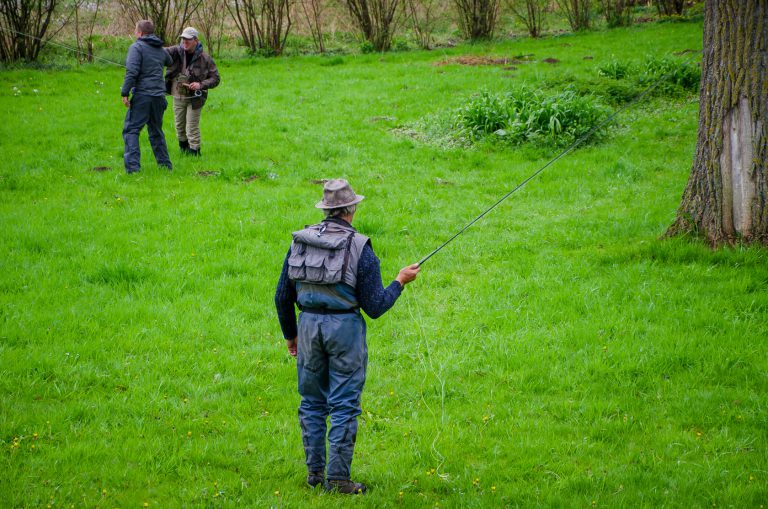
The forward shoot stops at about 11 o’clock, and has to be abrupt whilst being fluid. We’ll use the energy of our backcast to make our presentation. When learning this, you’ll have to look to your backcast, and when 50% of your fly line is deployed, you must start making your forward stroke.
This is, put briefly, how it should be done. I recommend that you learn and practice a lot, because when you know how to use this cast, you’ll be able to put your fly where you want, and make your fly bouncing on the water like a real sedge, or ricochet it under branches, so your fly will reach the far bank.
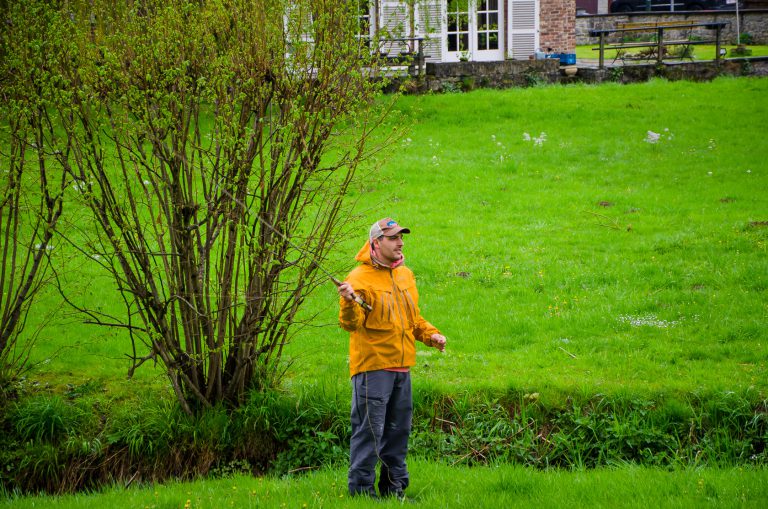
Then comes practice time on grass, and I have to admit that it has been years that I haven’t practiced it. This sensation of rethinking your technique is quite special. In front of us, we have a guy that lives and breathes fishing and is constantly thinking about how to get better, and trying to pass his experience to us. We can only admire in awe.
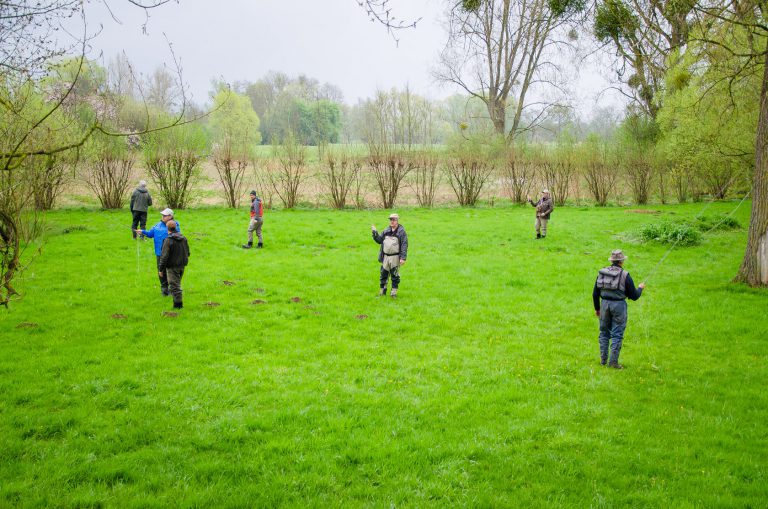
After all this theory and practice, it is time to eat, and we enjoy a nice barbecue which was welcome to revitalize our forces for the real deal on the river.
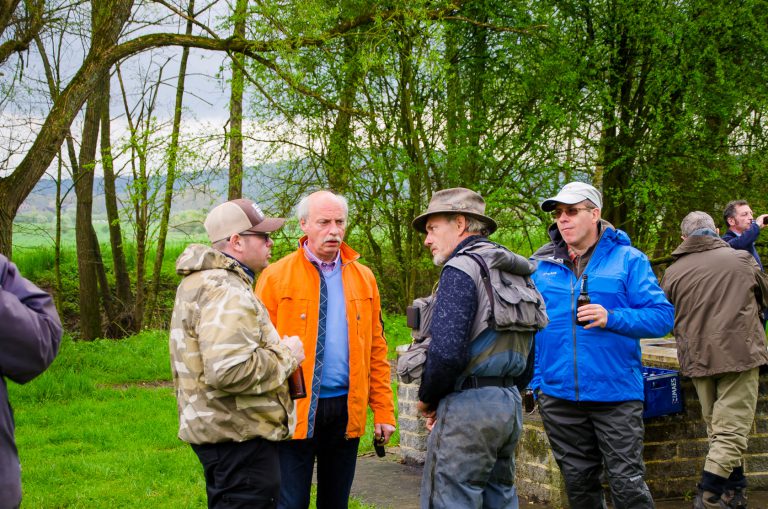
For those who weren’t completely convinced yet, we get to admire Yannick’s demonstration of his linear cast. He’s able to put his fly where he wanted it, behind a current, in the middle of a current, under branches, and let me assure you the spots he fished were hard to access, and would have left very little time to drift without dragging.
We are all convinced, the linear cast will open new possibilities, and offers a better presentation of dry flies.
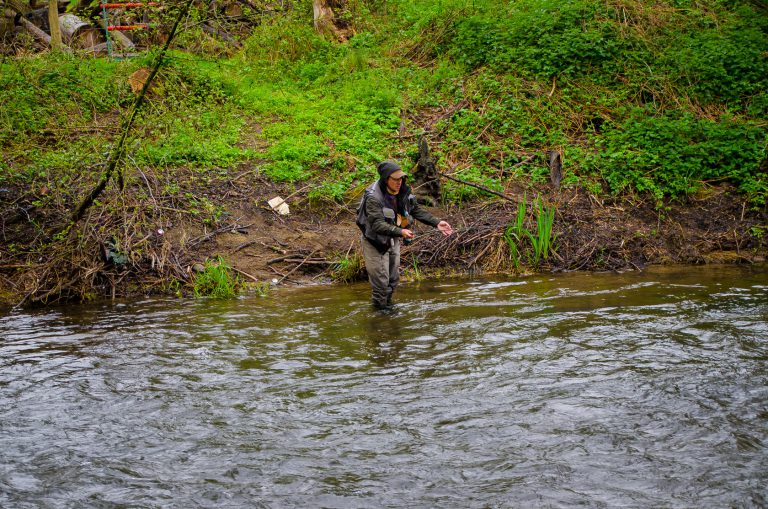
Then it is time for us to exercise with more or less success, but Yannick takes care of rectifying small errors and finetuning. Unfortunately, the fish are not in a feeding mood, but some of us who ended up changing to the nymph are able to save the day.
We finish the day at a local restaurant in a superb atmosphere, with off course fishing as our main subject.
Day 2
The second day, the weather conditions are much better, and nymph fishing is on the schedule. But before getting started, we visit the fishery’s hatchery, to discover the baby trouts which are to be introduced into the river later on the day.
The course takes off, and like the morning before, Yannick uses his vast pedagogic knowledge to us the vains to choose, the holding posts, the fish’s behavior, etc.
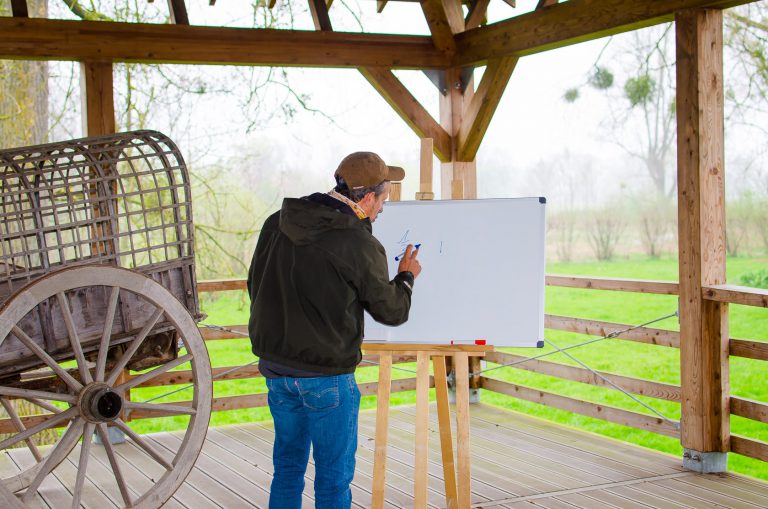
We learn that a good drift is made up of three parts :
- The flies get down in the water
- The flies are at the good fishing depth
- The flies are pushed upwards by the current
Again, this is all about balance and swiftness. You want to have the leader under enough tension to see the bite, but not too much avoiding drag.
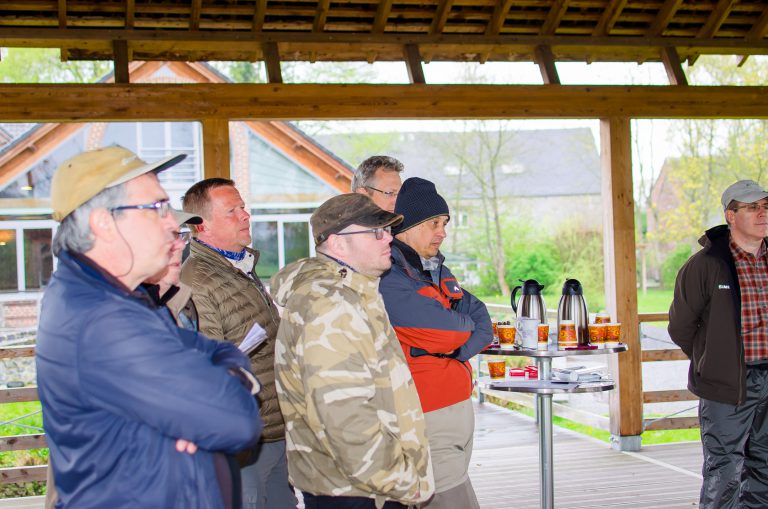
The linear cast is also important when nymph fishing, because it enables you to pose your nymphs in front of your leader before it hits the water, pushing your nymphs through the surface preventing the leader dragging your flies. This is really important, because, as Yannick teaches us, no insect is able to swim across the river.
The leader is the same as when fishing the dry fly, which is handy because you’re able to switch from dry fly to the nymph without changing the leader.
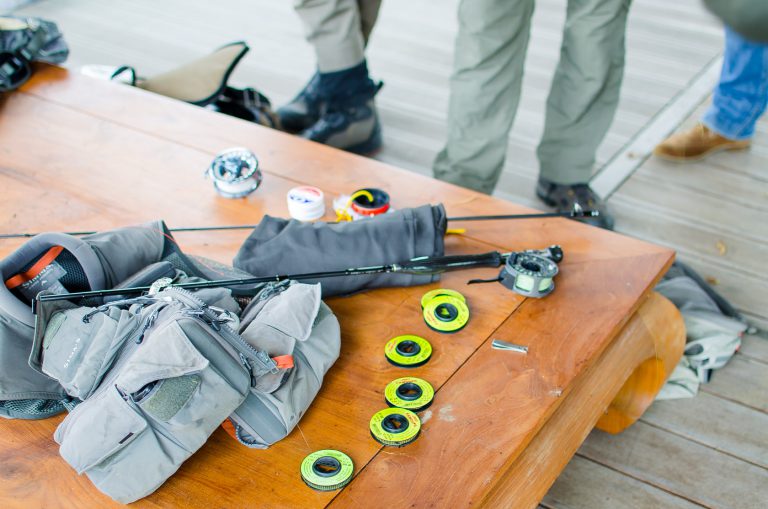
I will not bother entering in depth details of nymph fishing, beacause the most important thing that you need to consider is the drift. Every fly is able to take a fish, but when the drift of it is wrong, you won’t see the takes, or even not get a take at all.

It’s of capital importance that your fly indicator and leader are in the same water column. So, first of all, learn to create good drifts, and get lost in the zillion of models of nymphs afterwards. I can assure you that I learned that making a good drift isn’t all that easy, if you consider that one current is composed of dozens of differents seams, and you have to analyse and choose the best possible angle of attack, before delivering your flies.
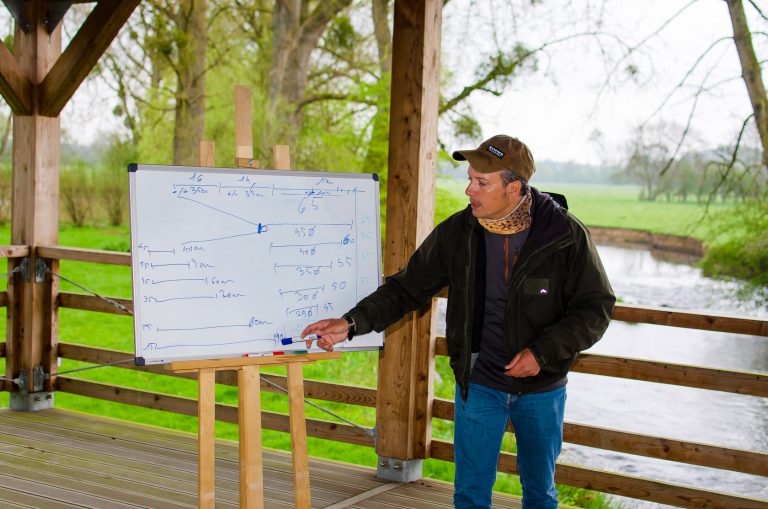
The morning drifts by really quickly, and we’re able to see the master at work. Ten minutes and four grayling later, we can convince ourselves that Yannick’s theories and techniques work like a charm.
Lunch time is again a welcome time for enjoying a good barbecue and a good Belgian beer, to gain forces for the afternoon session.
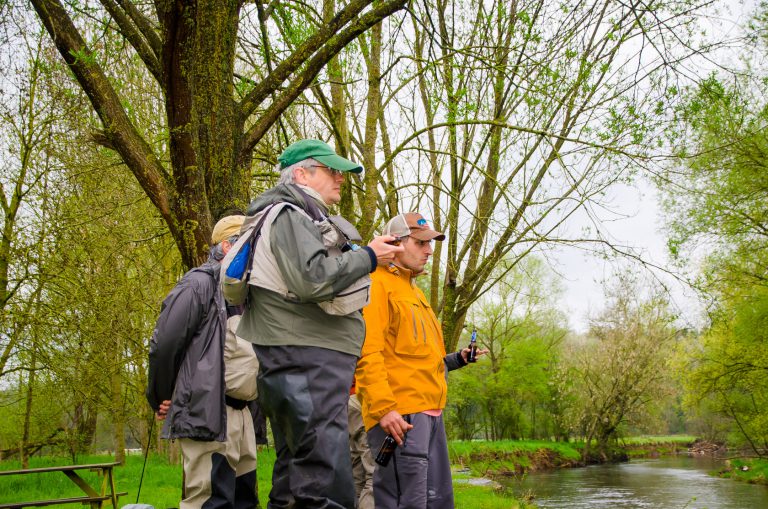
We pick a section on the river where we can spread out and fish. Once again Yannick comes by to check everyone and to make small adjustments on the water. The afternoon quickly fades, and everyone catches fish.
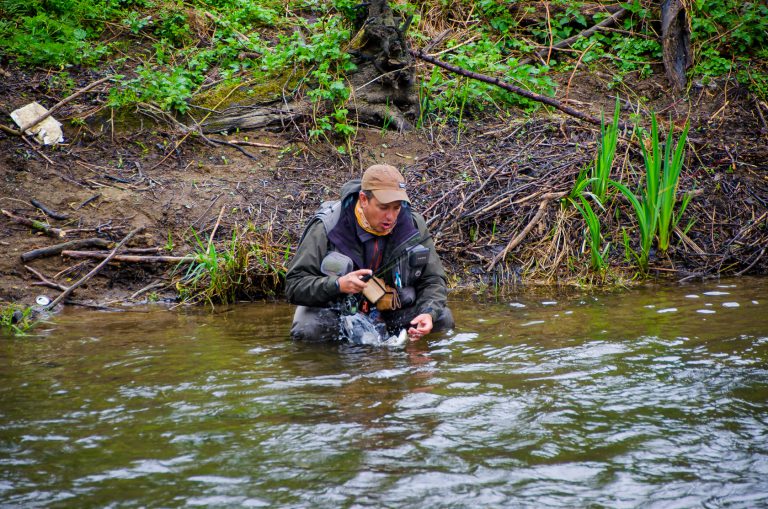
Unfortunately, the end of the weekend calls at 17H. I regret that it’s already over, because I was able to learn more in two days than in 10 days fishing.
But don’t worry, we have the honour to tell you that other trainings are planned, and these are a must for anyone wanting to push his level.

Special thanks to the Fishbone team for this invitation.
Register now for the next training
Indeed, they have recently open the registrations for the 2016 edition of the training. More details are available on the following ad or on Fishbone’s facebook page.
Don’t miss this chance to improve your fishing technic !


